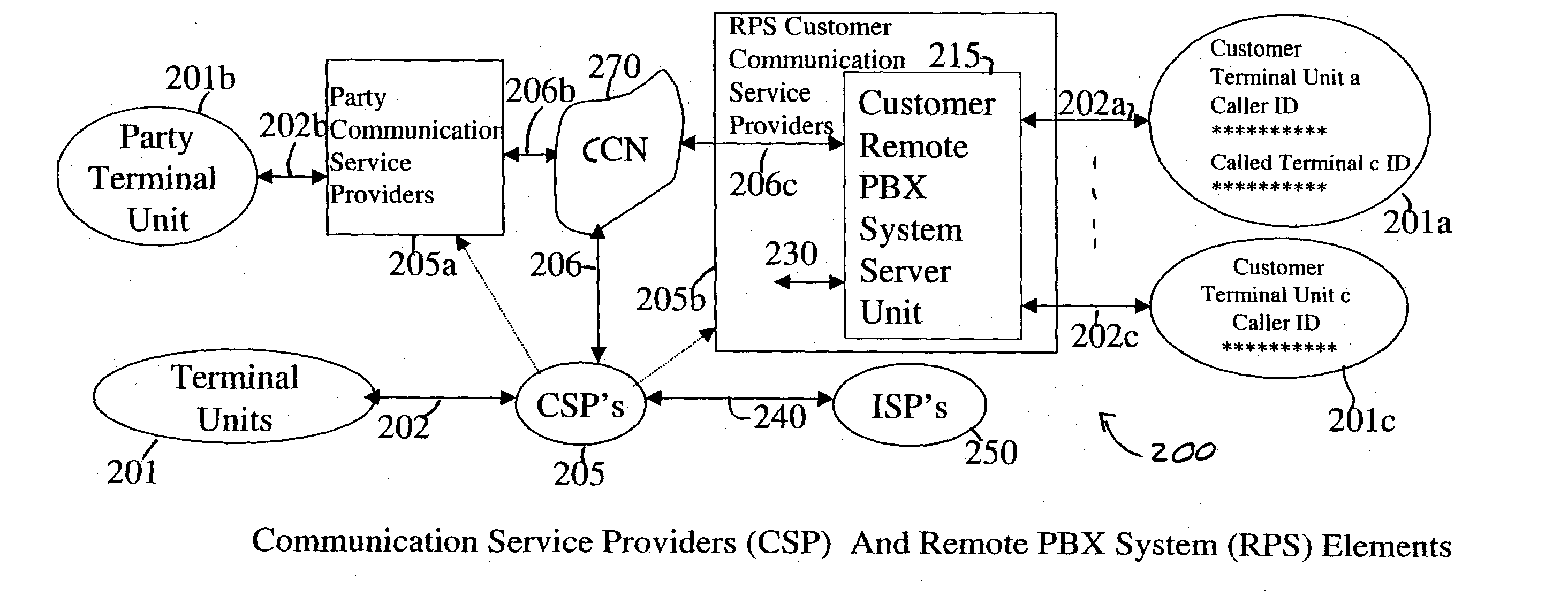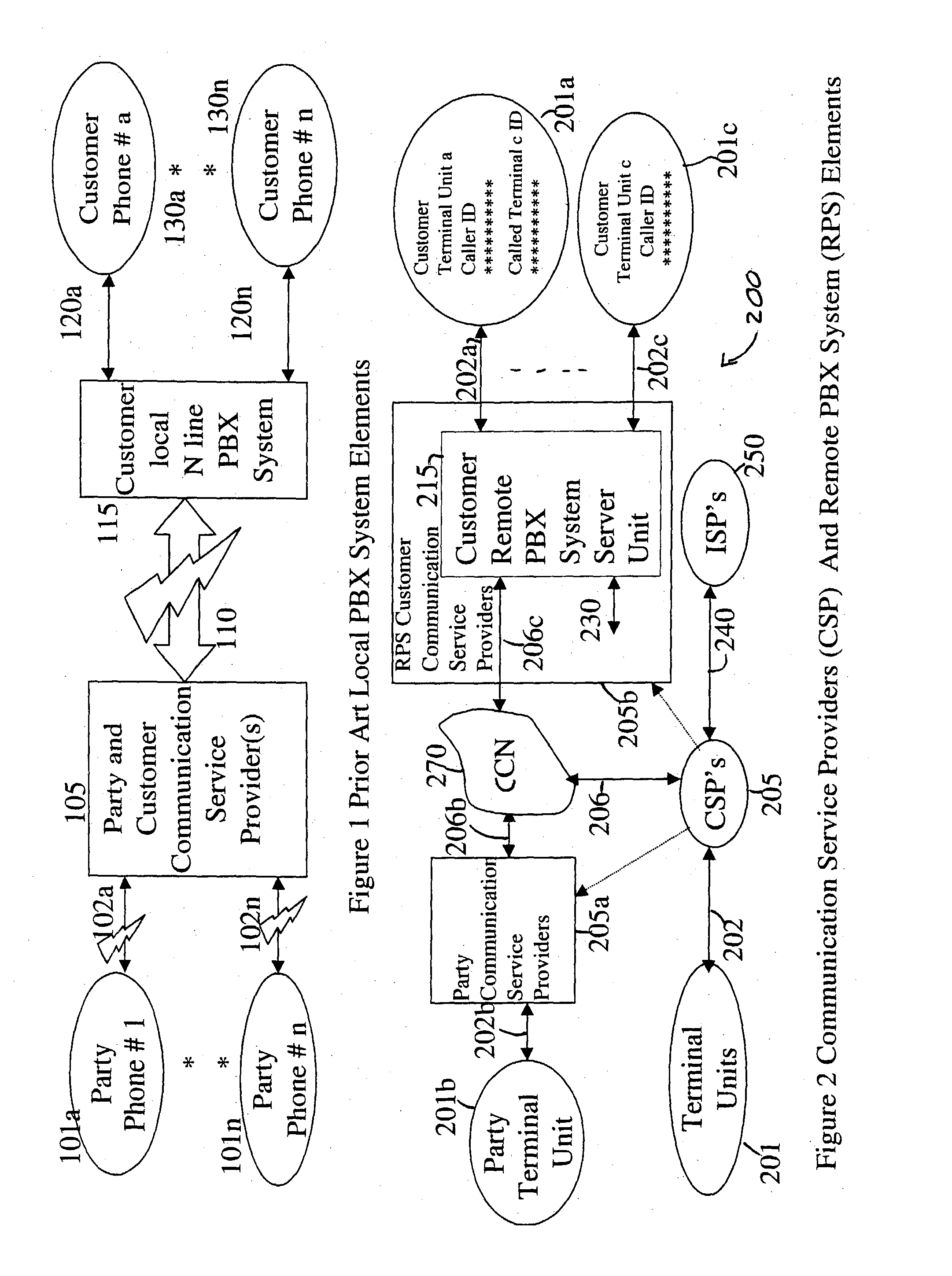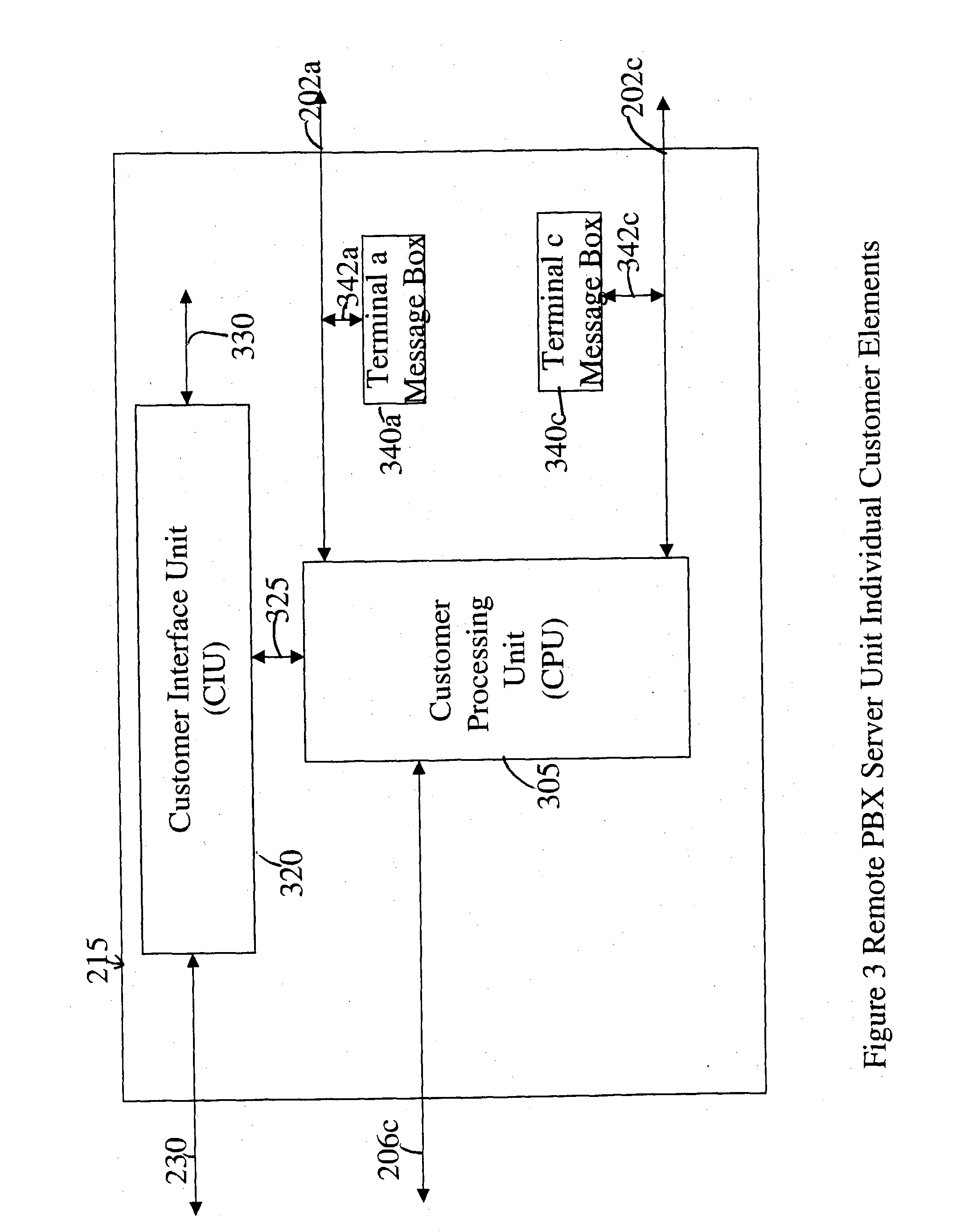Remote PBX system and advanced communication terminals
a technology of advanced communication terminals and remote pbx, which is applied in the field of remote pbx systems and advanced communication terminals, can solve the problems of affecting the service life of the system, and reducing so as to increase the cost of the communication operating system a small amount, improve the service life of the system, and improve the effect of customer service provider revenu
- Summary
- Abstract
- Description
- Claims
- Application Information
AI Technical Summary
Benefits of technology
Problems solved by technology
Method used
Image
Examples
Embodiment Construction
[0052] Referring now to the drawings, shown in FIG. 2 is an RPS 20c constructed in accordance with the present invention. The RPS 200 is described with the aid of FIGS. 2 through 6 and can operate using an Interactive Voice Response system (IVR) so existing customer terminals can be used to interface with the remote portions of the system. With the aid of FIG. 4, a description of communication terminal modifications that allows customer terminals to be used with an RPS service without using an Interactive Voice Response system (IVR) is also described. The general embodiment of the RPS element is described with the aid of FIG. 2 that shows a general communication network (CCN) 270 connecting all the various Communication Service Provider (CSP) 205 and connecting all the Internet Service Providers (ISP) terminals 250 to all communication terminal units 201 via 202, 206 and 240, respectively. For later describing the RPS operation, FIG. 2 also shows just a single calling party terminal...
PUM
 Login to View More
Login to View More Abstract
Description
Claims
Application Information
 Login to View More
Login to View More - R&D
- Intellectual Property
- Life Sciences
- Materials
- Tech Scout
- Unparalleled Data Quality
- Higher Quality Content
- 60% Fewer Hallucinations
Browse by: Latest US Patents, China's latest patents, Technical Efficacy Thesaurus, Application Domain, Technology Topic, Popular Technical Reports.
© 2025 PatSnap. All rights reserved.Legal|Privacy policy|Modern Slavery Act Transparency Statement|Sitemap|About US| Contact US: help@patsnap.com



